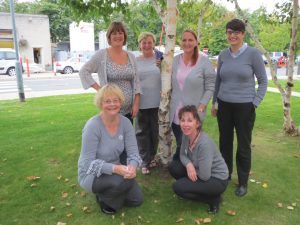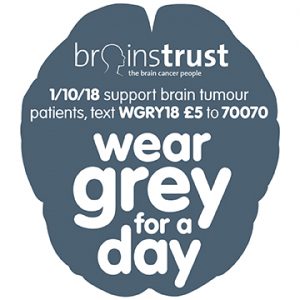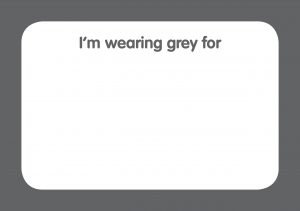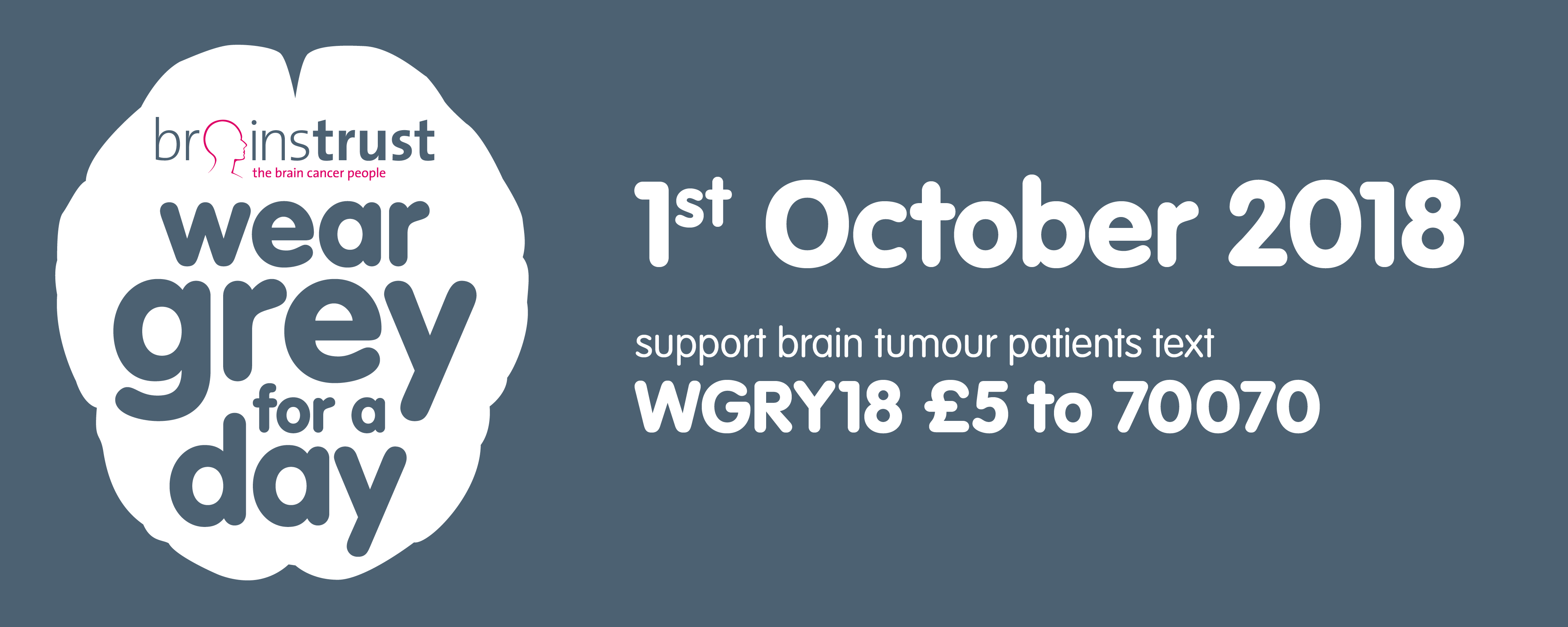
We’re turning the world grey to support people with brain tumours.
Over 15,000 people will be diagnosed with a brain tumour this year. That’s why every year on the 1st October we all Wear Grey to raise awareness of the invisible illness that is brain cancer. And this year is no different.
Since the launch of Wear Grey in 2011, together we have raised over £100,000 to support the brain tumour community. This year, thousands of people will come together to turn the world grey and show their support for people battling brain tumours, and to raise awareness of the challenges that life with a brain tumour brings.
Register for Wear Grey 2018
Signing up for Wear Grey is the first step, and it’s really easy. Just fill in the form below to order your welcome pack. It’s full of all the fundraising and awareness tools and ideas you need to make your Wear Grey event a huge success. Then on the 1st October, Wear Grey, and encourage as many of your friends, family and colleagues to do likewise.
Donate now
If you’d like to create a Just Giving page to support your Wear Grey event, this can be done through the Wear Grey 2018 campaign page.
Just click here and create your page today. You can also show your support to Wear Grey by visiting our website to donate, or you can text your donation, by texting WGRY18 £5 to 70070. Together, we can show our support to brain tumour patients, and raise awareness of this silent disease.
Shop now
No Wear Grey event is complete without brainstrust’s Wear Grey t-shirts, pins or wristbands. There is a brand new t-shirt for 2018, which can be purchased from our online shop. We also have a variety of merchandise, such as wristbands and pin badges, ready for you to buy and sell at your Wear Grey event, so that everyone can show their support to brain tumour patients.
Register for your free Wear Grey 2018 pack today
Each pack contains stickers, awareness posters, a collection box and inspiring resources to make raising awareness and vital funds for brain tumour support on October 1st easier than it has ever been.
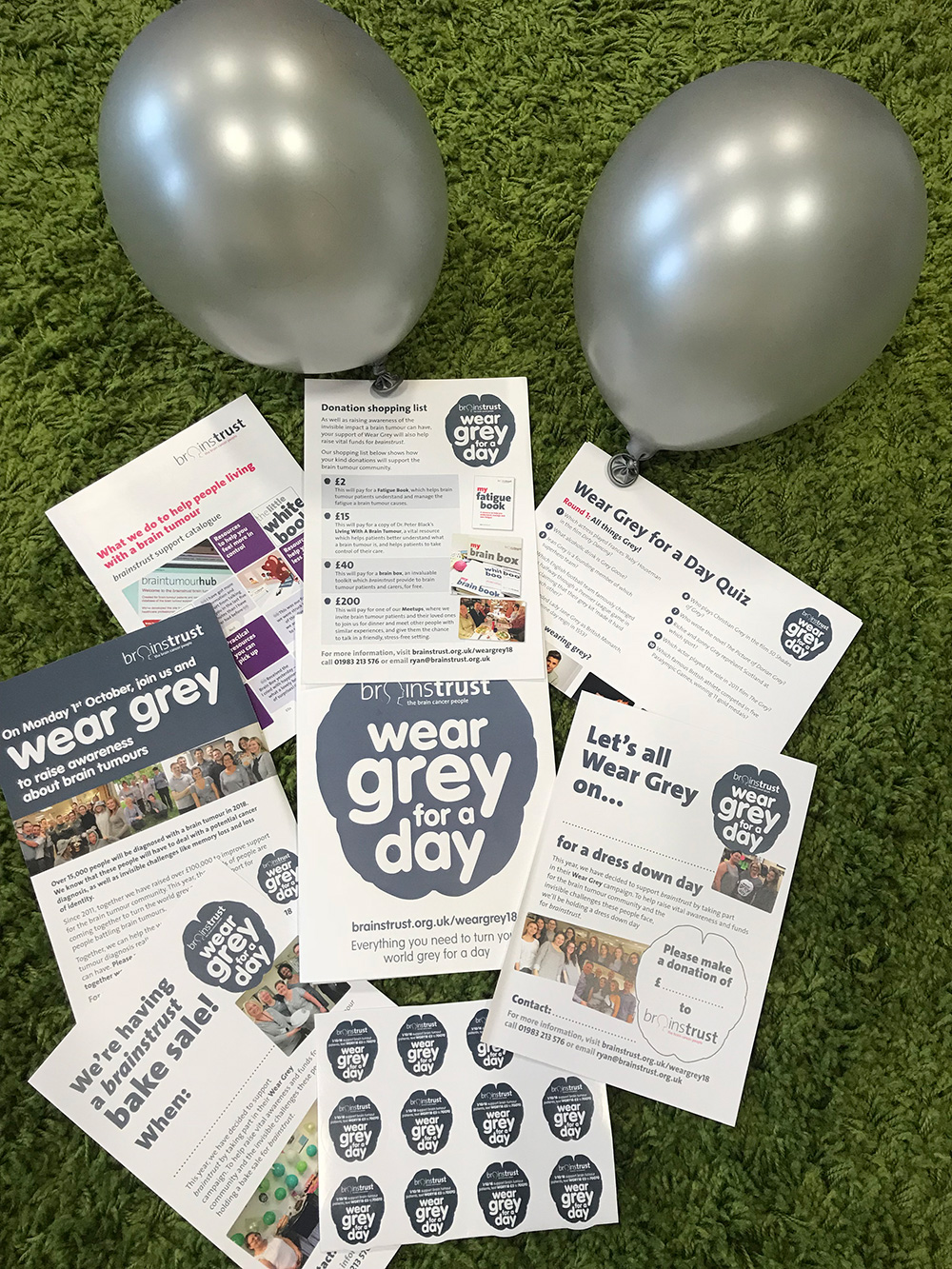
Your personal data is very important to us because it allows us to help people living with a brain tumour. Your details will only be used by brainstrust in adherence to our privacy policy. We will never give your information to other organisations without first seeking your specific consent. You can manage your mailing preferences at any time on this page
Got a question?
If you’re having problems with registering for your Wear Grey pack, have a question about Wear Grey or your fundraising, then please get in touch. Call us on 01983 213 576, or email ryan@brainstrust.org.uk.
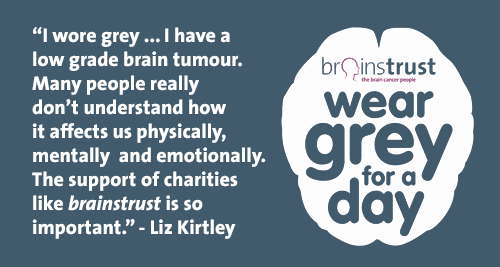
Need more fundraising materials? Download them here and print at home!
Wear Grey for a Day 2018 poster
Take Wear Grey to school or work
Every year, schools colleges and workplaces wear grey to raise awareness of the invisible challenges that come with a brain tumour diagnosis. This year we are delighted to be working alongside the following organisations:


